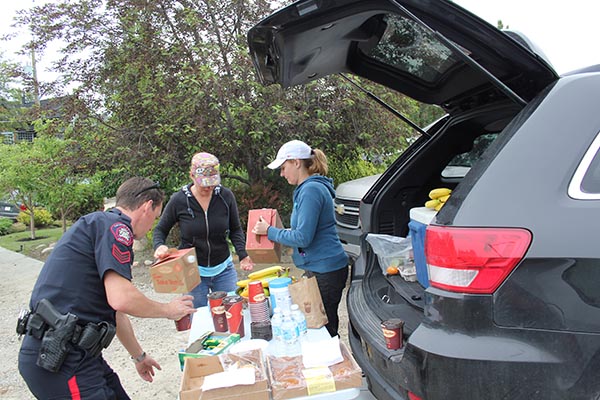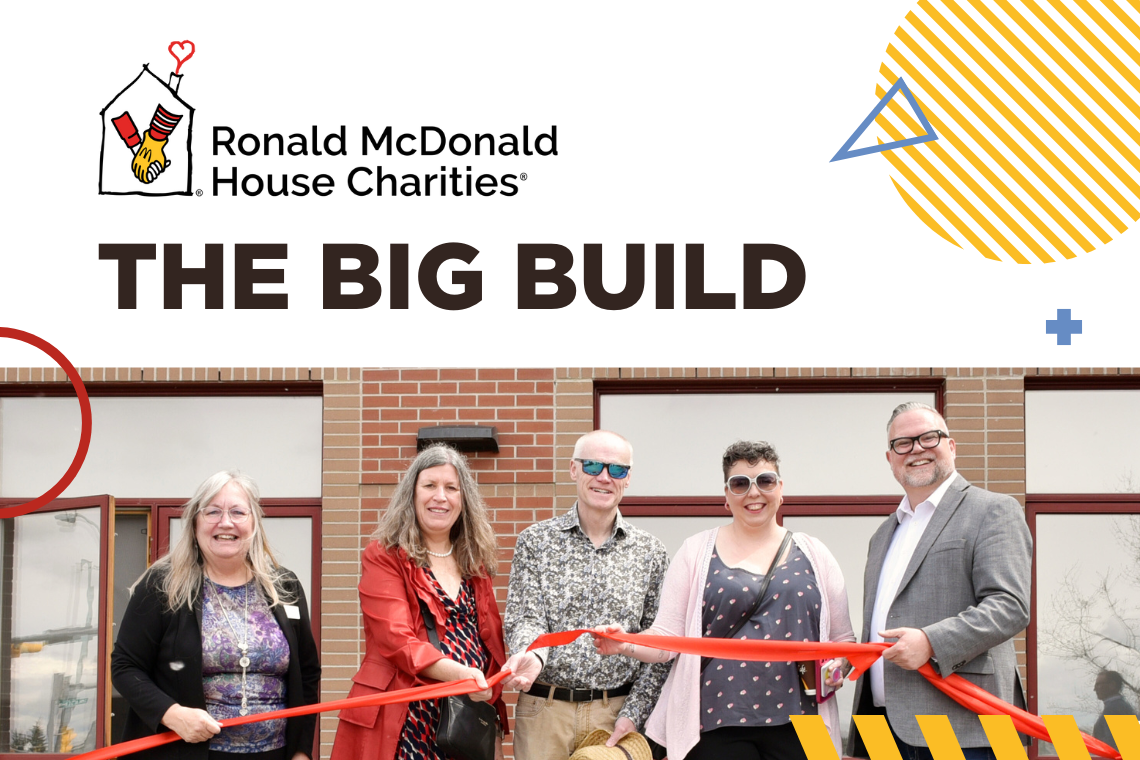June 11, 2014 | CREBNow
#YYCFLOOD: Flooded with a sense of community
A look back at Calgary's June floods and forward into the futureJune 20 started out like any other day in Calgary. With showers in the forecast, parents saw their children off to school with umbrellas in hand and rain boots on their feet, then began their own daily commute along Calgary's soon-to be rain-soaked streets.
Little did they know that by the end of weekend, much of their city would be left underwater during what's since been dubbed the "100-Year Flood." "At first I didn't think the flooding would be that bad. I figured we'd be in our apartment the next day," said James Paton, who lived in Mission at the time, and was one of more than 100,000 Calgarians forced from their homes.
"However, I noticed the berm they were building around the Safeway on Fourth Street and that is when I thought, 'This might actually get pretty bad.'"
In the 12 months since floodwaters swept through Calgary and southern Alberta – Calgary's state of emergency came to an end July 4 - much work has been done to repair and rebuild, with much more still to do. Yet arguably as important is how a stronger community emerged which, to this day, is as resilient as ever, said Mayor Naheed Nenshi.
"I learned two things [about Calgary in the days following the flood]," he said. "First is that we are incredibly lucky to live in a place where government works and where government works well and where my colleagues in the public service go to work every day to keep us safe, whether those are first responders or transit operators or garbage men.
"The second thing I learned was the incredible power and resilience of citizens and the fact that so many everyday people came together and helped in whatever way they could, whether it was ripping out a total stranger's drywall or helping their kid run a lemonade stand for flood relief. Calgarians really came together, and we, as a people, are
enormously resilient."

Over that weekend, the Elbow River would peak at 1,240 metres cubed per second, 12 times the regular rate and more than three times as fast as the flood of 2005 when combined with the Bow River. The Bow itself peaked at more than three times the rate when compared to 2005.
With water levels quickly rising, the City issued a mandatory evacuation to more than two dozen communities shortly after 2 p.m. on June 20. Calgarians were told to pack for a 72-hour minimum. Many, like Paton, would be out much longer.
"We didn't end up getting back into our apartment for six weeks," he said. "When we did return, we didn't have any hot water for about a month so I would take cold showers in the morning and then heat water up on the stove so [my girlfriend] could take a bath at night."
Just south of Calgary, High River was perhaps the hardest hit community during flooding. The entire town was evacuated and remained under a state of emergency for more than a month. The community of Hampton Hills had homes underwater for as long as three weeks. In the end, 350 homes in the town were found to be uninhabitable.
To the west, Banff escaped the floodwaters unscathed, but the same couldn't be said for Canmore. The raging Cougar Creek damaged more than 40 homes along its banks. The province announced in early June $28 million will be invested in the community for more than 15 flood-mitigation projects.
For many homeowners, as well as business owners, the rebuilding process continues. As of December 2013, a post-flood report released by the City found out of 4,000 businesses impacted, 11 businesses have self-reported
as closed. 2,932 building and trade permits were issued and completed, 3,409 safety code inspections were done and the City held a winterization campaign helping residents protect unoccupied properties during the winter months.
For homeowners, the City and Canadian Red Cross have established a flood permit grant program that covers fees associated with new permit applications required to repair, restore or rebuild a property. Up to $7,000 in permit fees, per property is available for those who qualify. The pilot will run until Dec. 31 before being evaluated in 2015.
As far as post-flood recovery, the City has identified 200 flood-related infrastructure projects to be completed, including repairs to flood-damaged equipment in City building basements, repairs to boat launches and the purchase of inflatable dyking berms for flood preparedness.
In response to work left to be done Nenshi broke things into three phases.
"The first phase is response, and that's done. That's what we did in the immediate aftermath – keeping people safe and protecting people's property as best we could. So that part is done and I think the City did a pretty good job on that," he said.
The second phase is "recovery" – covering things like pathways that need to be fixed, replaced or refurbished. and pedestrian bridges to be replaced over the Elbow River.
"The third is resilience," said Nenshi, adding there's a lot of work to be done but the city is in good shape for the short term in what the mayor calls "brute force mitigation." The city has better flood barriers and the ability to deploy them faster than before.
Long-term solutions may include upstream mitigation through dams or reservoirs, on which Nenshi said there's still a lot to be done.
"But I don't think we're behind on them," he said. "They were always going to be multi-year construction projects and I want to make sure that if we're spending that kind of money, we're getting them exactly right. And if that takes a little more time to do, I'm not that upset about that."
On June 9, the Alberta government announced a three-year, $325 million grant program for cities and towns in the province to use to protect against future flood events. On June 10, Premier Dave Hancock joined Nenshi in touring flood erosion, recovery and mitigation projects in the city.
"Recovery takes a long time and it's a continuous effort, a continuing partnership," he said. "[It's] important that Calgarians and all Albertans know that we continue to work together on this. We've made some great progress, we went through the immediate response, we moved into the recovery phase.
"We're still working hard to make sure that individuals have the opportunity to reclaim their lives to move forward and that communities have the ability to feel safe."
- With files from Cody Stuart
* Photos courtesy City of Calgary
Tagged: Calgary | Calgary Community | Canmore | Community | Dave Hancock | flood | High River | Naheed Nenshi | recovery




